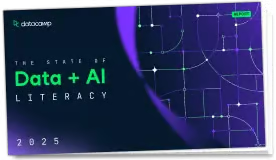
Methods for various generic commands, for the class
"ssf" of spatially sampled functions.
# S3 method for ssf
marks(x, …) # S3 method for ssf
marks(x, …) <- value
# S3 method for ssf
unmark(X)
# S3 method for ssf
as.im(X, …)
# S3 method for ssf
as.function(x, …)
# S3 method for ssf
as.ppp(X, …)
# S3 method for ssf
print(x, …, brief=FALSE)
# S3 method for ssf
summary(object, …)
# S3 method for ssf
range(x, …)
# S3 method for ssf
min(x, …)
# S3 method for ssf
max(x, …)
# S3 method for ssf
integral(f, domain=NULL, ..., weights=attr(f, "weights"))
A spatially sampled function (object of class "ssf").
Arguments passed to the default method.
Logical value controlling the amount of detail printed.
Matrix of replacement values for the function.
Optional.
Domain of integration. An object of class"owin" or "tess".
Optional. Numeric vector of quadrature weights associated with the sample points.
marks returns a matrix.
marks(x) <- value returns an object of class "ssf".
as.owin returns a window (object of class "owin").
as.ppp and unmark
return a point pattern (object of class "ppp").
as.function returns a function(x,y) of class "funxy".
print returns NULL.
summary returns an object of class
"summary.ssf" which has a print method.
range returns a numeric vector of length 2.
min and max return a single numeric value.
integral returns a numeric or complex value, vector, or matrix.
integral(f) returns a numeric or complex value
(if f had numeric or complex values)
or a numeric vector (if f had vector values).
If domain is a tessellation then integral(f, domain)
returns a numeric or complex vector with one entry for each tile
(if f had numeric or complex values)
or a numeric matrix with one row for each tile
(if f had vector values).
An object of class "ssf" represents a
function (real- or vector-valued) that has been
sampled at a finite set of points.
The commands documented here are methods for this class,
for the generic commands
marks,
marks<-,
unmark,
as.im,
as.function,
as.ppp,
print,
summary,
range,
min,
max
and integral.
# NOT RUN {
g <- distfun(cells[1:4])
X <- rsyst(Window(cells), 10)
f <- ssf(X, g(X))
f
summary(f)
marks(f)
as.ppp(f)
as.im(f)
integral(f)
integral(f, quadrats(Window(f), 3))
# }
Run the code above in your browser using DataLab